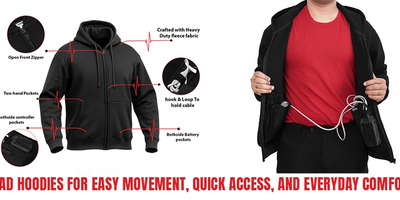
LVAD Heart Device vs. Heart Transplant: Key Differences
Heart failure happens when your heart can’t meet the body’s normal requirement of blood to function properly. Each organ in your body only works when it gets the nutrients and oxygen supplied by the blood. And imagine what will happen if it gets impaired for some reason, like Heart Failure. You will have a severely compromised quality of life.
Almost 10 out of 100 patients with heart failure have an advanced stage with symptoms, such as shortness of breath, fatigue, edema, chest pain, etc. In this stage, multiple treatments may be required at the same time, but still, the risk of death remains high.
The innovations in this modern world have now led to more effective treatment options. Other than a heart transplant, where a diseased heart is totally replaced with a healthy one, another effective treatment is a mechanical heart device that is implanted in your heart to assist in pumping blood. Although these mechanical devices, like a Left Ventricular Heart Device (LVAD), are very effective, it has not fully replaced the need for a heart transplant.
Let’s talk about both of these treatment options in detail so that you can confidently make an informed decision for yourself or your loved one.
What is an LVAD?
Left Ventricular Assist Device or LVAD is a heart pump that is implanted in the heart to help its pumping action. Think of LVAD as your heart's helping hand, as it does not cure the disease but just helps your heart to help the left chamber of the heart pump blood efficiently. But what if there is a problem with the right side of the heart? Well, in that case, RVAD is used, which is termed the Right Ventricular Assist Device and is implanted in patients with right-sided heart failure.
No matter which heart side is involved, these devices are there to keep the circulation normal.
How LVAD Works?
Let’s understand the basics first. The left ventricle is a part of your heart that pumps oxygen-rich blood into the aorta, from where it supplies the whole body. This is easy for a healthy heart, but in heart failure, your heart becomes weak and cannot pump blood like it used to. So, when the LVAD is attached to the left ventricle and aorta, it compensates for the loss of function.
LVAD consists of a pump, driveline, controller, and batteries. The controller and batteries are carried outside the body, and the LVAD pump remains inside the heart. The LVAD pump works and regulates the blood flow, the controller manages the whole system, while batteries provide the energy to work 24/7.
Different types of LVADs, such as HeartMate and HeartWare, are chosen based on what suits your condition and why you need it. Your doctor may recommend LVAD either as a bridge to get a heart transplant until you get a suitable donor, or as a destination therapy or permanent treatment.
What Is a Heart Transplant and When Do You Need It?
When your heart undergoes damage that cannot be repaired, either with medications or with surgery, you will need a Heart Transplant – a surgical procedure in which your diseased heart is replaced with a healthy heart from a donor. The donor heart comes from someone who has passed away but had a healthy functioning heart.
For adults, a heart transplant is most commonly performed in conditions like ischemic heart disease, arrhythmias, heart valve problems, and even rejection of a previously transplanted heart. In children, the reason is totally different, where a heart transplant is performed for a genetic heart condition, which means children who are born with a structural defect in their heart.
Eligibility Criteria for LVAD vs. Heart Failure:
You need to understand that not every patient with heart failure is the same, and not all can be treated with the same treatment. Yes, you read it right. Now understand with this scenario that two patients diagnosed with heart failure may have different stages of disease, symptoms, and their general health. This is the reason your doctor will thoroughly plan your treatment only after careful, complete evaluation and diagnostic tests.
So, how will your doctor choose between an LVAD and a heart transplant? Here is an eligibility criterion:
-
When LVAD becomes the best option: Your doctor will make you eligible for LVAD as a destination therapy because you are too weak or too old to undergo a heart transplant procedure. Patients with other health problems, like kidney disease or lung disease, are also not suitable to undergo a major operation like a heart transplant.
-
When a Heart Transplant is more suitable: After a complete examination, your doctor may suggest that you go for a heart transplant because, according to the evaluation, you may not be suitable for LVAD.
-
When you need time to recover: You may not currently be eligible for a heart transplant because of temporary situations like hypertension, mental health problems, carcinoma, and others. After complete recovery, you will be eligible for a heart transplant.
- When both options are suitable: The condition of the patient is such that both heart transplant and LVAD can be performed, but due to long waiting times for heart transplant, the patient needs to go for LVAD.
How do we choose between LVAD and a Heart Transplant?
There is no hard and fast rule or one-size-fits-all answer to this. Deciding between these two treatment options is not associated with a set of rules to follow, but the decision solely depends on your unique condition.
When your doctor is planning a treatment for heart failure, he has to follow an individualized approach to assess your condition so that he can make an informed decision on choosing one treatment over another.
During the examination, your doctor considers various variables like your age, general health, and the presence of other comorbid diseases like obesity and carcinoma. These details matter because they can affect how well you recover and how long your treatment will help you. According to a study, evaluation is taken in three important steps, which help to choose between two treatment options.
For a heart transplant, your doctor will carefully manage each thing that can raise the risk of your body rejecting the new heart or any major complications after surgery. For the LVAD heart device, it is important to assess the risk of right-sided heart failure, structural abnormalities to implant an LVAD, and blood clot disorders.
Key Differences between LVAD and Heart Transplant
For a heart failure patient, both LVAD and Heart transplant are treatment options and can improve symptoms and quality of life, but they differ in several important ways:
Procedure Complexity:
Both types of treatments involve major surgery, but a heart transplant procedure is more complicated as it involves the replacement of an old, diseased heart with a donor heart. An LVAD surgery is not one that we can call less serious, but as compared to a heart transplant, it is a less complex procedure.
Recovery Time:
The heart transplant procedure usually requires a longer recovery time than LVAD. Because a new organ is introduced into the body, it needs time to adjust to it. You may need to take medications for a very long period to prevent organ rejection. LVAD patients may recover quickly in comparison with a heart transplant. But, they have to adapt a new lifestyle with major modifications, including learning to manage the device and its equipment with LVAD-specific clothing and LVAD accessories.
Long-Term Survival and Outcomes:
A heart transplant generally offers long-term survival rates for patients who meet the eligibility criteria. On the other hand, with the latest LVAD types, it is now possible to limit the risk and support patients for many years. LVAD is a beneficial option, especially for patients who cannot undergo Heart Transplant surgery.
Quality of Life:
Heart transplant patients can live a more active lifestyle after recovery, as compared to LVAD patients who need to carry and manage the controller and battery at all times. For example, you need to wear an LVAD shirt to carry your LVAD device.
Cost and Accessibility:
Both LVAD and Heart Transplant are complicated procedures and may require proper assessment and evaluation from your doctor. But a heart transplant involves higher costs, and you may need to take post-surgical medications for life. LVAD is more affordable to patients and is feasible even when a donor heart is not available.
Availability and Wait Times:
You can only get a heart transplant if there is a donor available. Your doctor places your name on a waiting list, and you have to wait until a suitable donor heart is available. On the other hand, LVAD is available all the time, even for those who are on the waiting list for a heart transplant.
Lifestyle Impact:
Heart transplant patients live without external equipment, while LVAD users have to wear LVAD gear for regular maintenance.
Why do you need LVAD gear after LVAD implantation?
LVAD consists of internal and external components, and you need to keep the external components with you at all times. To carry these LVAD components, you need to wear LVAD-specific clothing instead of your regular wear. For example, the LVAD vest HeartMate 3 is specifically designed to keep the LVAD HeartMate 3 secured and composed.
Because the heart depends on the LVAD to circulate blood, the LVAD gear must be worn at all times. It also allows you to move freely without worrying about the device’s safety and accommodation.
Possible Complications Associated with LVADs:
The LVAD device benefits and risks are important things to consider before choosing a heart failure treatment. Although with the latest LVAD types, there are fewer chances of the risk, there are still chances of the following complications:
-
Infection, especially at the driveline site
-
Blood clots
-
Stroke
-
Internal bleeding
-
Device malfunction or failure
-
Right heart failure
-
Damage to red blood cells inside the blood vessels
Possible Complications Associated with Heart Transplants:
A heart transplant has the same complications as any other organ transplant and may need proper care and medications to prevent them. Here are the possible complications:
-
Organ rejection
-
Infection
-
Side effects from organ rejection medications
-
Coronary artery disease
-
Kidney damage
-
High blood pressure
Can you replace Heart Transplant Treatment with an LVAD Implantation?
LVAD devices have improved in recent years, which means they are now more effective in function with fewer chances of complications. It has also increased its demand and is now recommended in treatment options more often. Not just as a long-term solution, LVAD is now used as a bridge to transplant when the patient has to wait for an organ donor.
As we have discussed earlier, it is not a simple approach to choose LVAD over a Heart Transplant. It requires careful evaluation and examination. You may be eligible for a heart transplant, but you may not have an organ donor yet. In that case, you will need an LVAD heart device. Here are some of the tips to choose the most suitable option:
Tips to choose a suitable treatment for Heart Failure:
-
Categorize the patient with heart failure and identify the stage of severity.
-
Choose a specialized healthcare professional for proper assessment and examination.
-
Your doctor will perform a number of tests on you to describe your condition.
-
Prefer a multidisciplinary approach to make an informed decision for a particular treatment.
-
Discuss the treatment options with your doctor and choose the most suitable option for you. (LVAD vs. Heart Transplant)
-
Your doctor will rule out the contraindications to choose the best option for you.
The Bottom Line
When it comes to advanced heart failure, it may not be easy for you to make a quick decision between LVAD and a Heart Transplant. Both treatments are life-saving, but which one is right for you totally depends on your health and unique condition. One of the important steps you must take is to consult with your doctor and team, ask questions, and fully understand your condition before making any decision.
FAQs
Which one is better between LVAD and Heart Transplant?
LVAD and Heart Transplant are both life-saving treatments, and which one is best for you depends on your needs instead of treatment options.
Does LVAD repair the damaged heart?
No, LVAD is just implanted to help the heart pump blood, and it is not here to treat or cure the underlying cause of damage.
When is LVAD contraindicated?
Patients with various heart conditions, like kidney disease, liver disease, or bleeding disorders, may not be suitable for LVAD.
What is the life expectancy after a Heart Transplant?
The life expectancy after a heart transplant is good, and most of the patients live even after 10 years of transplant and even longer.
Prev post

Best LVAD Clothing for Hot Weather and Summer Comfort
Updated on 07 November 2025
Next post

Top 10 Signs of a Healthy Heart You Should Know
Updated on 04 November 2025








